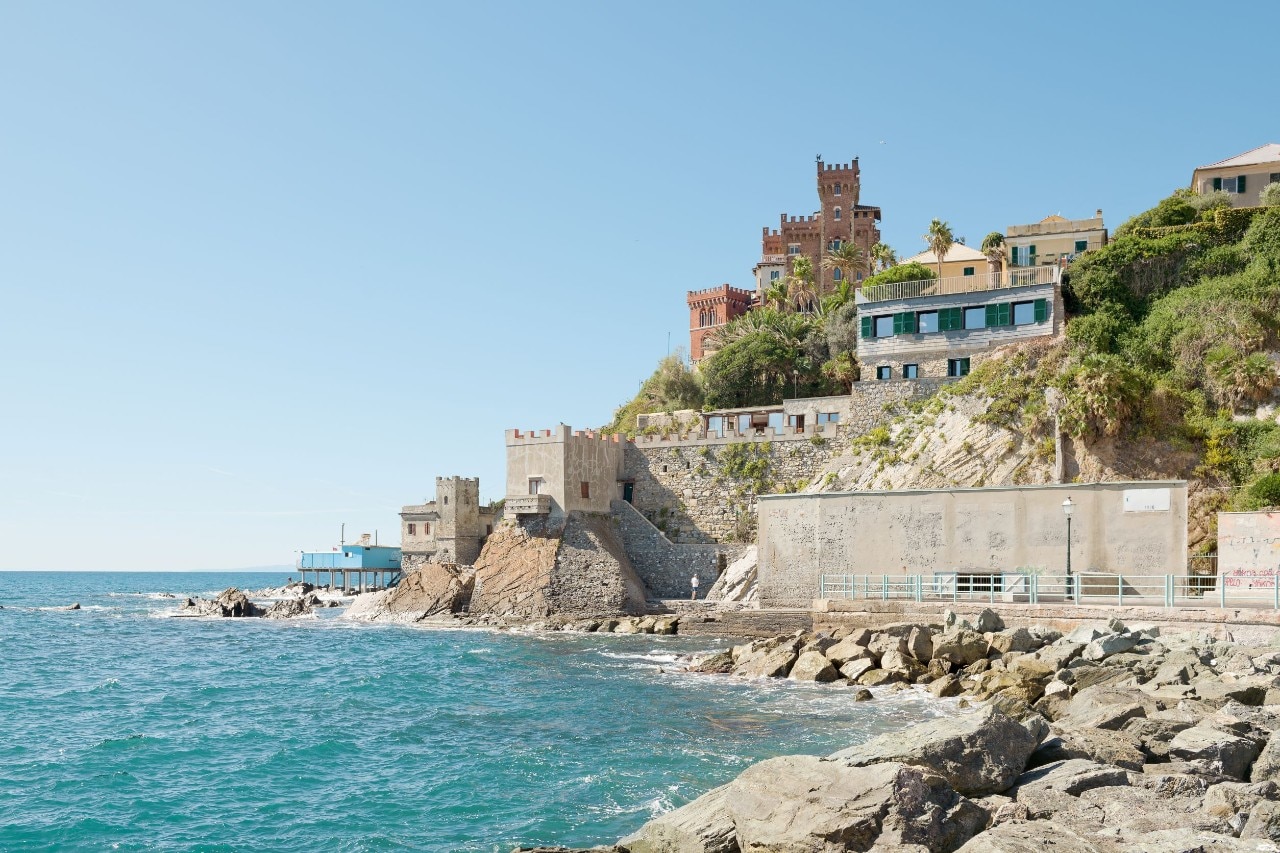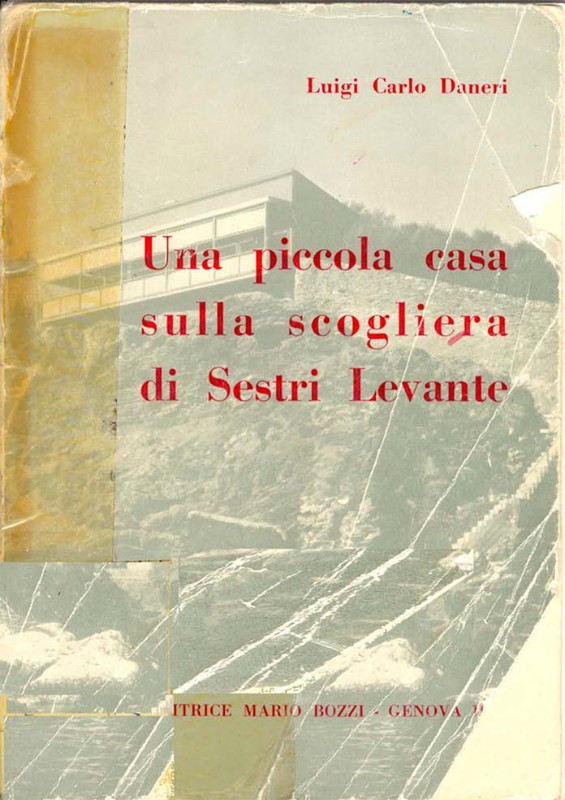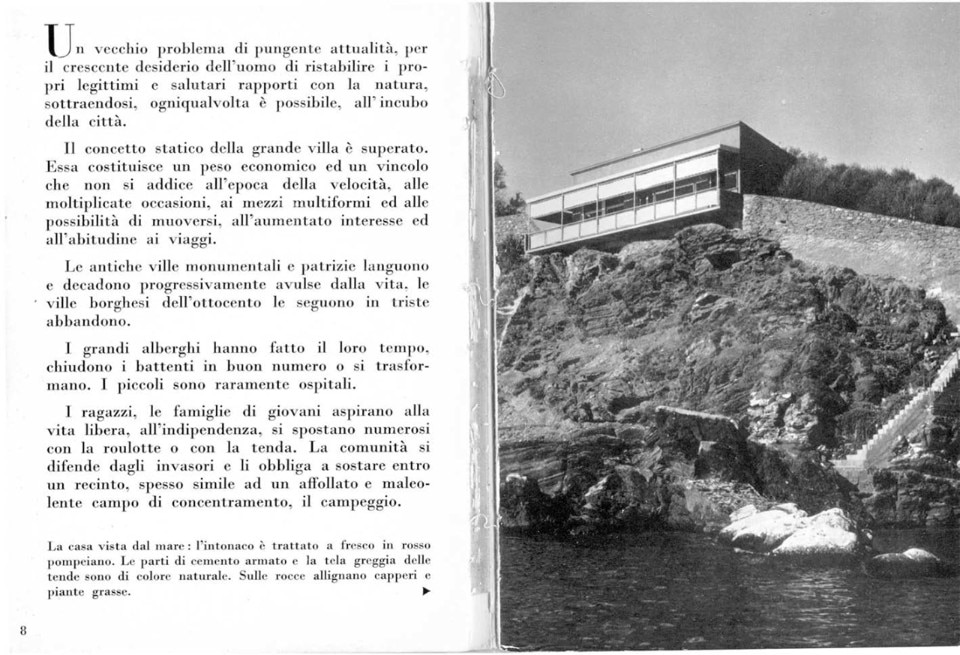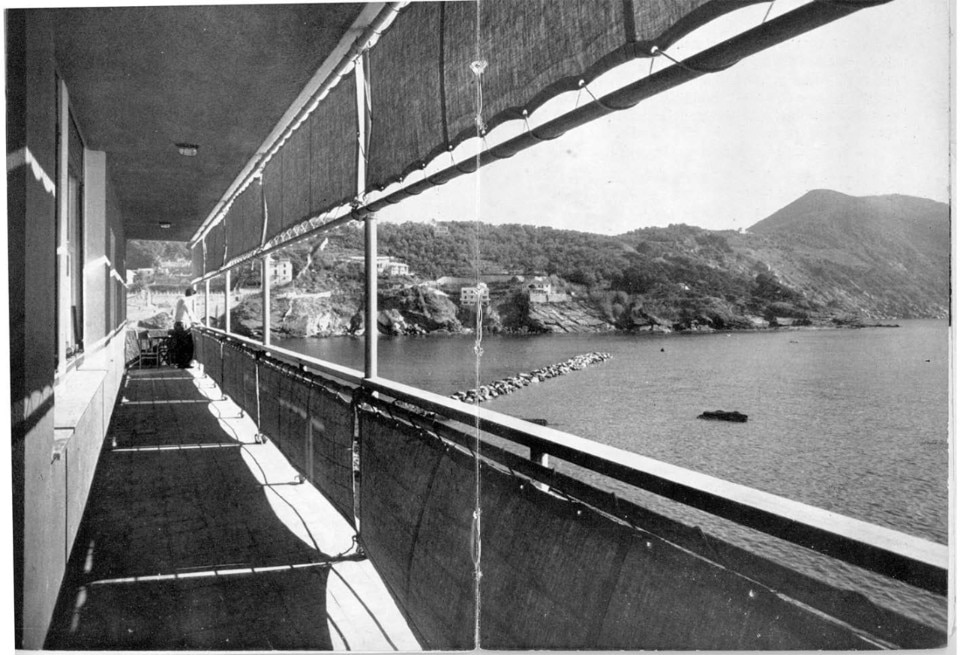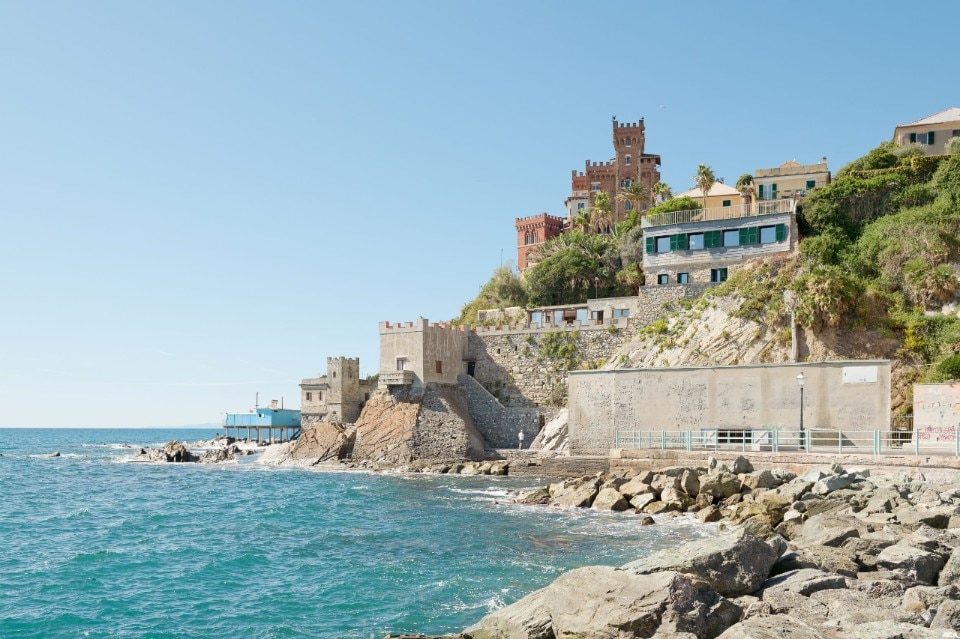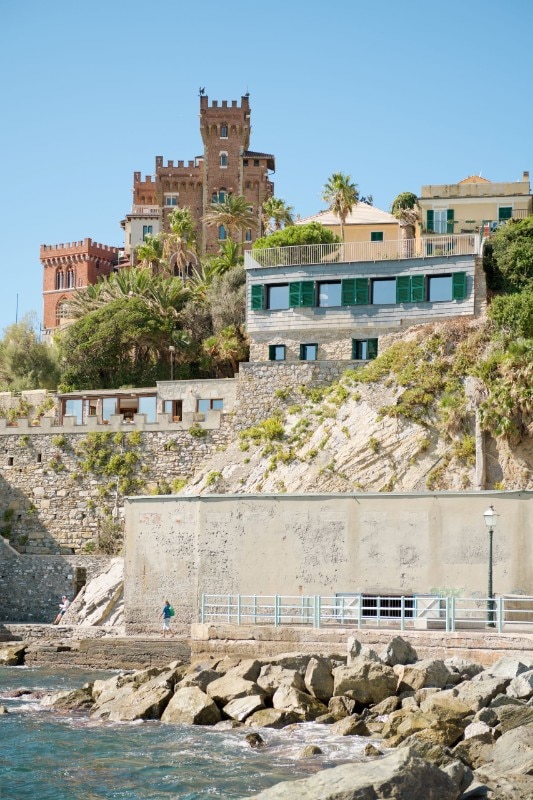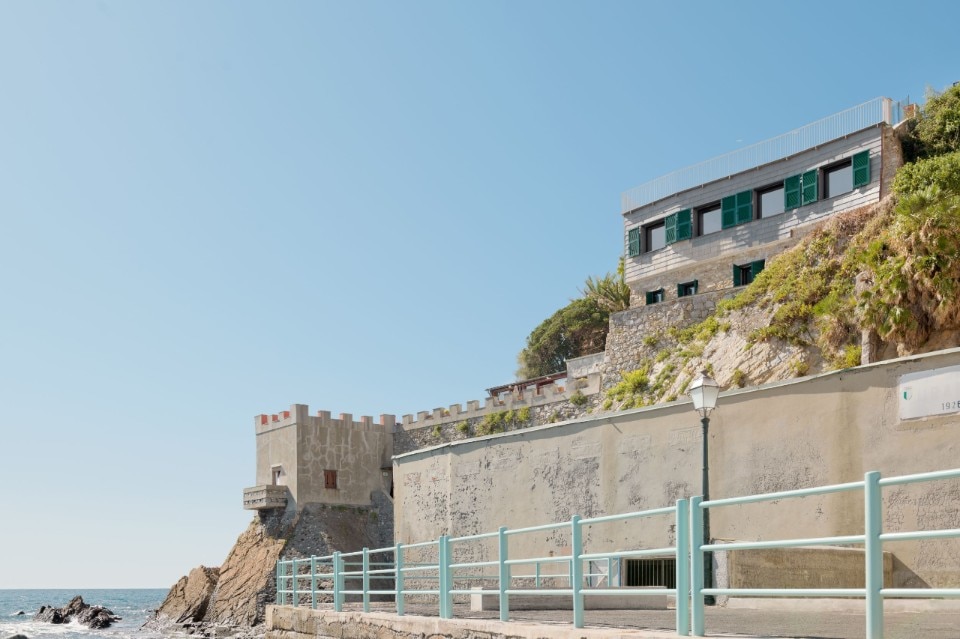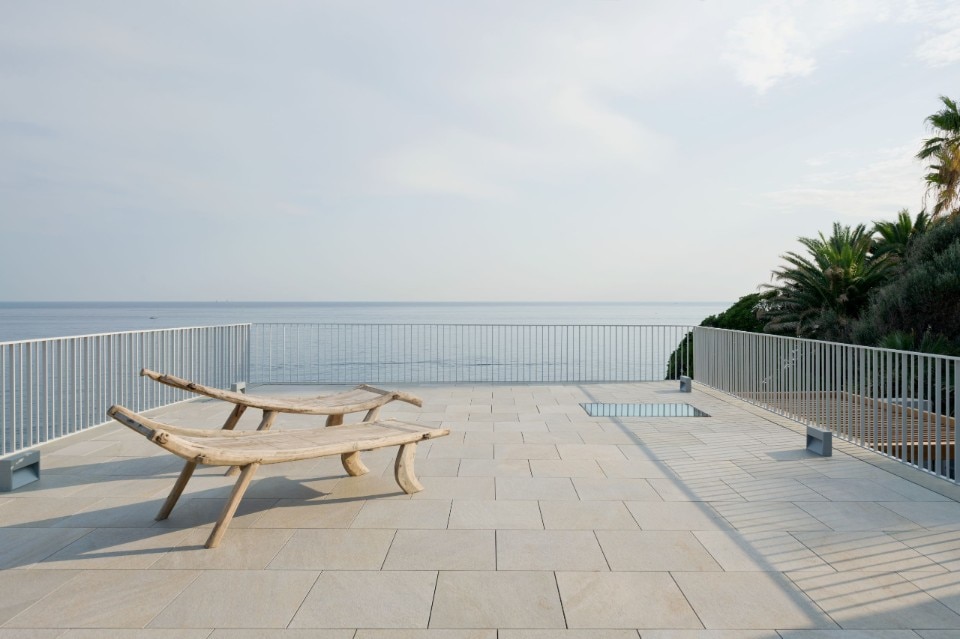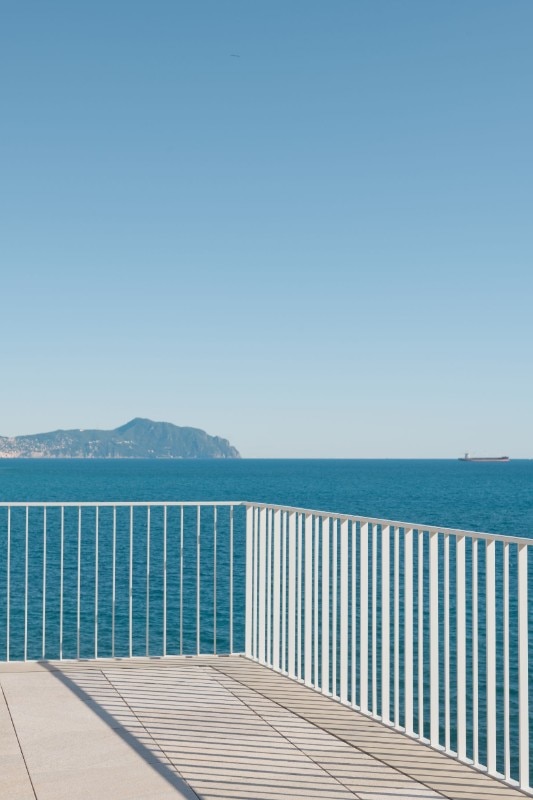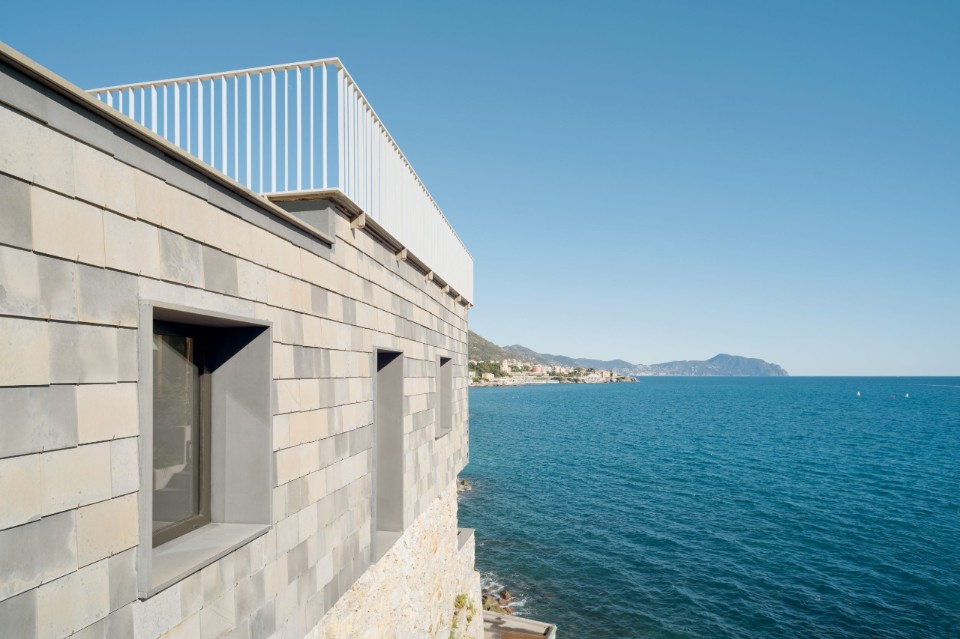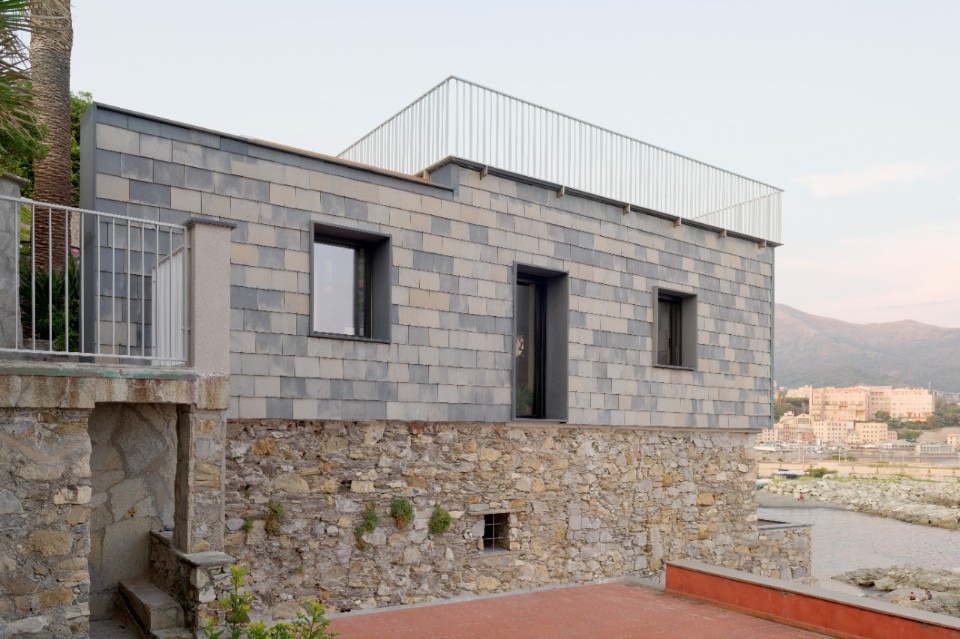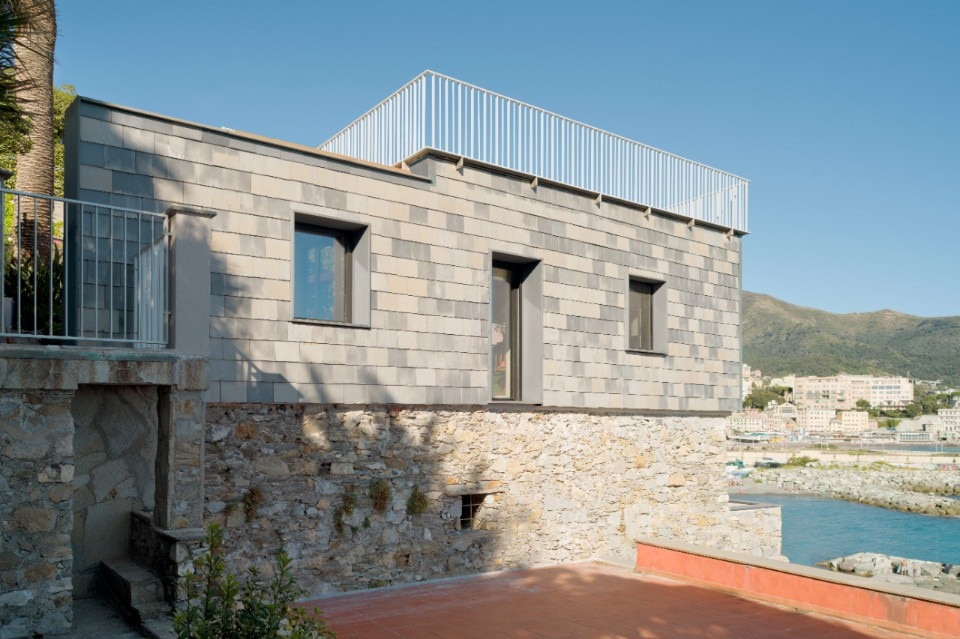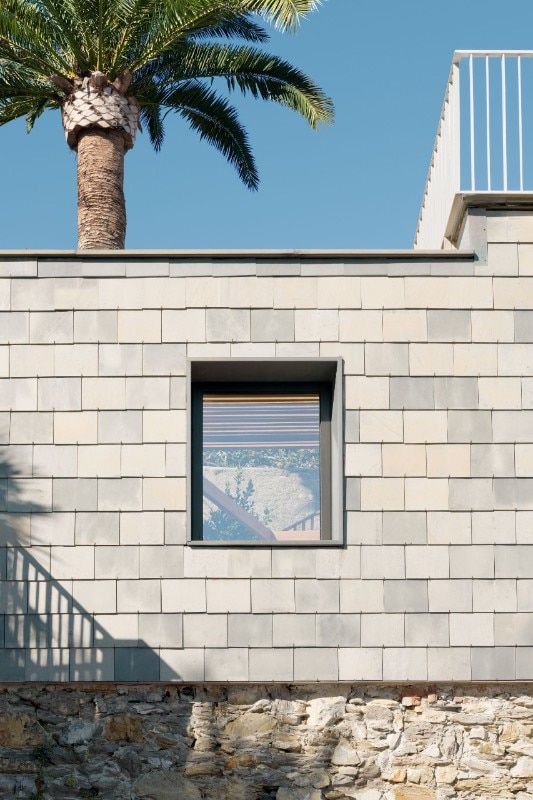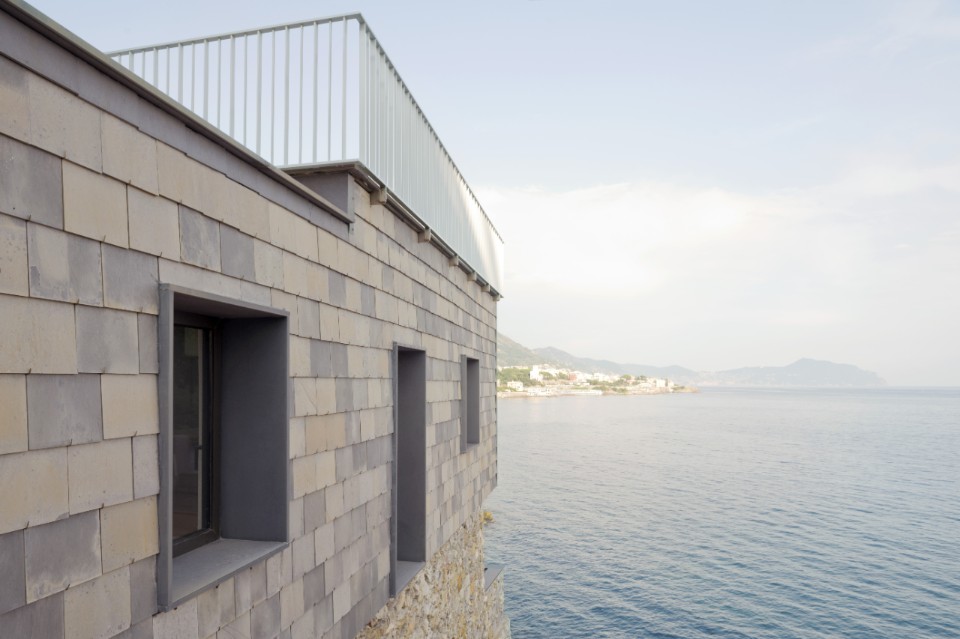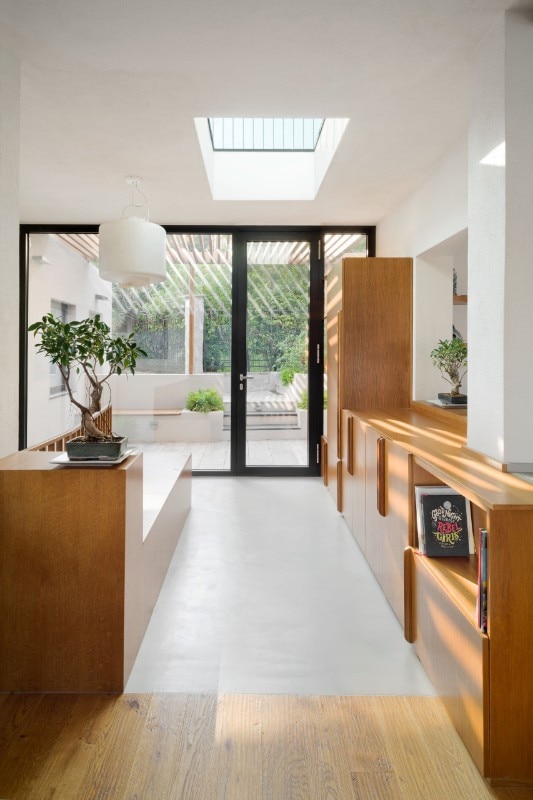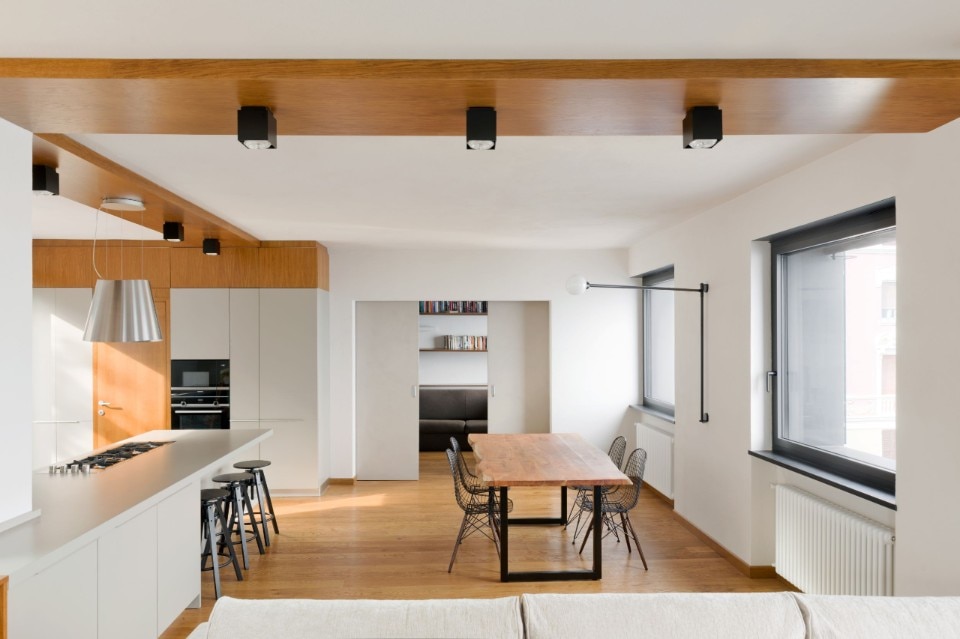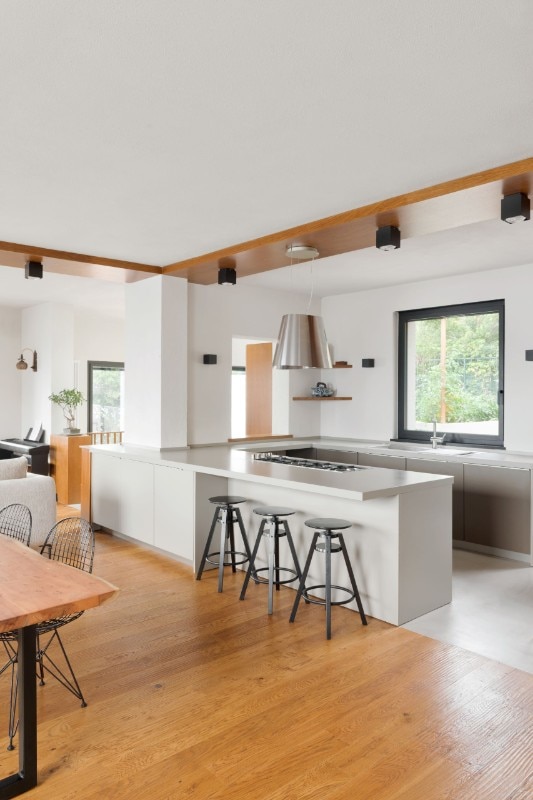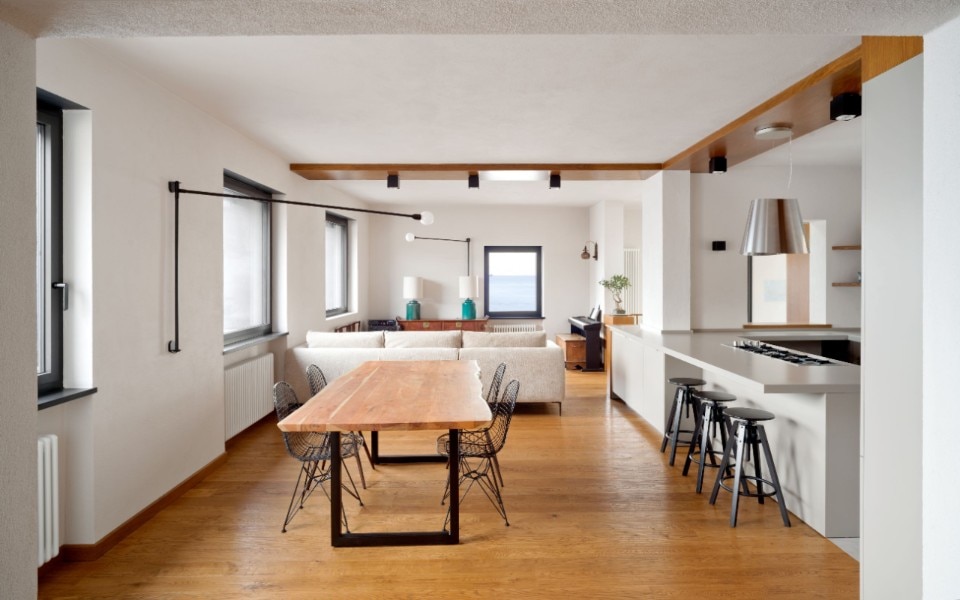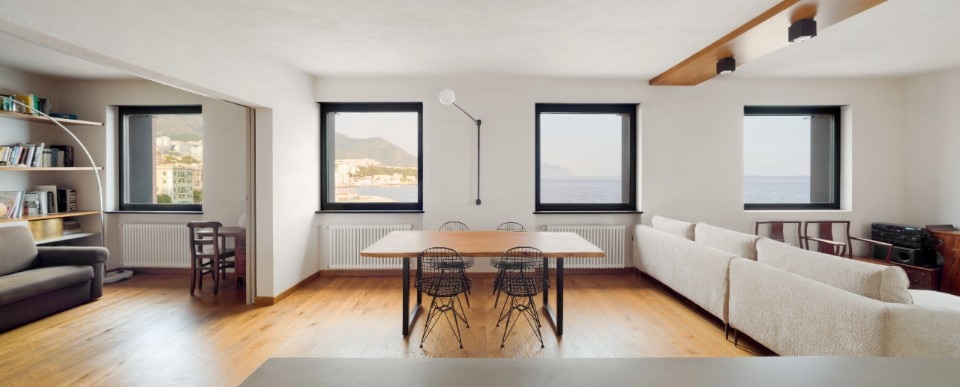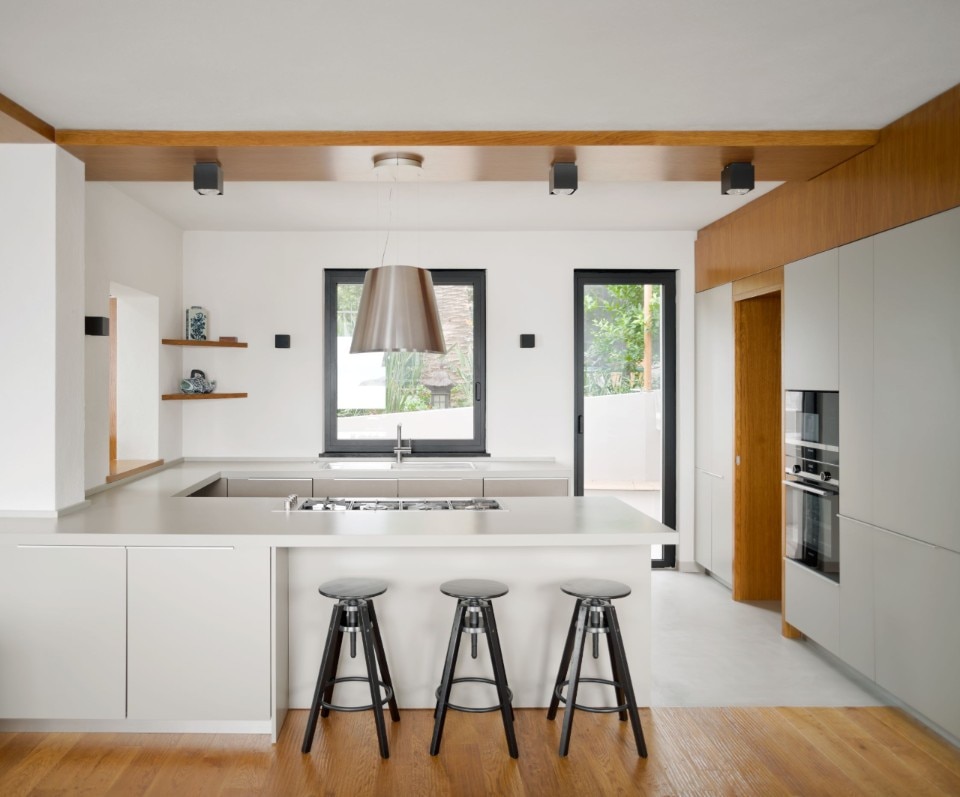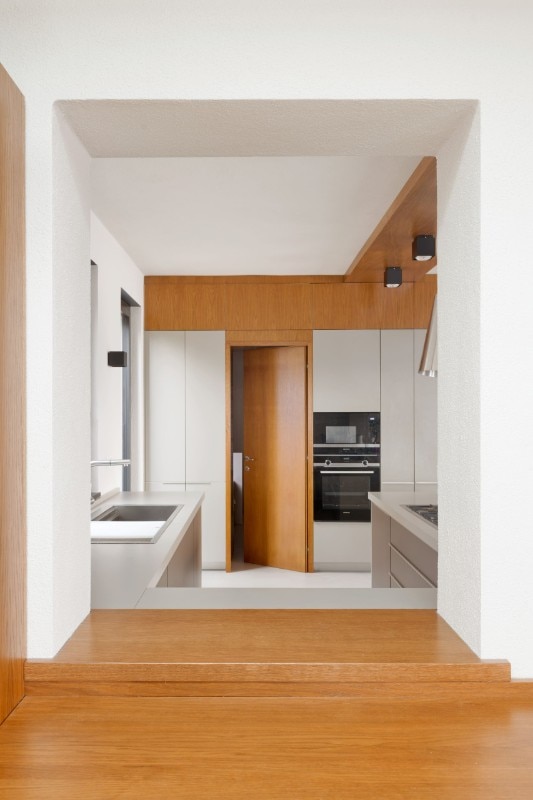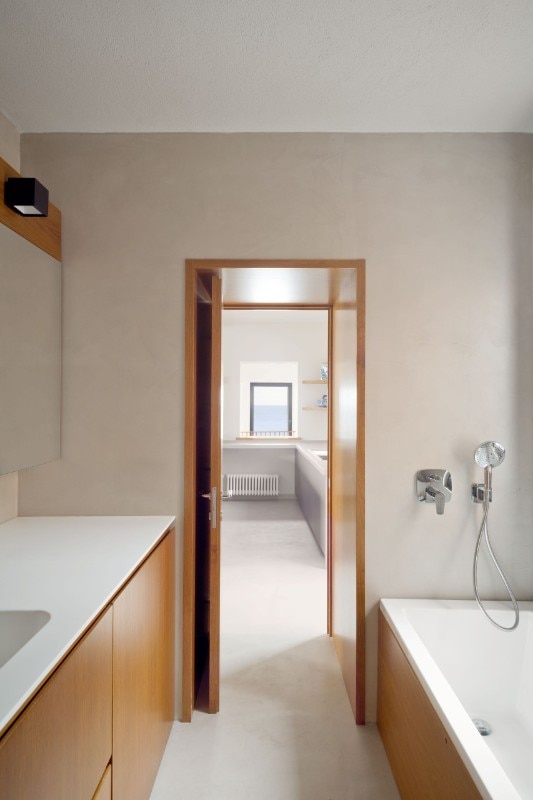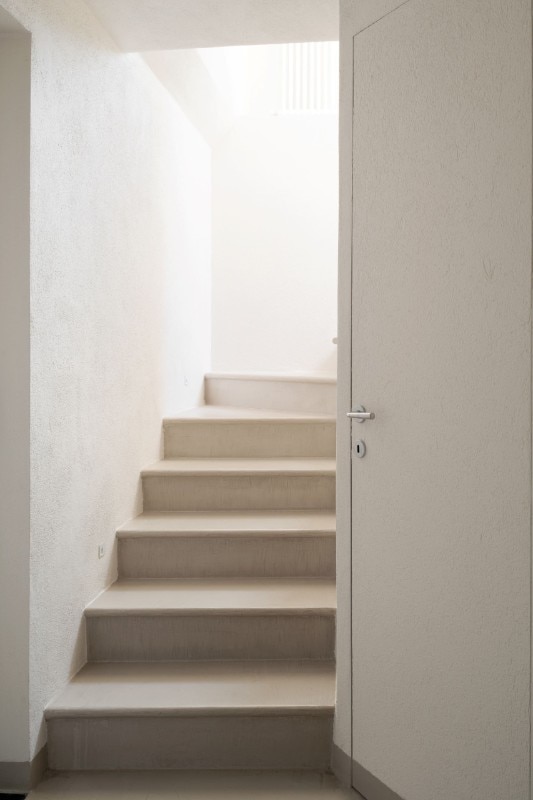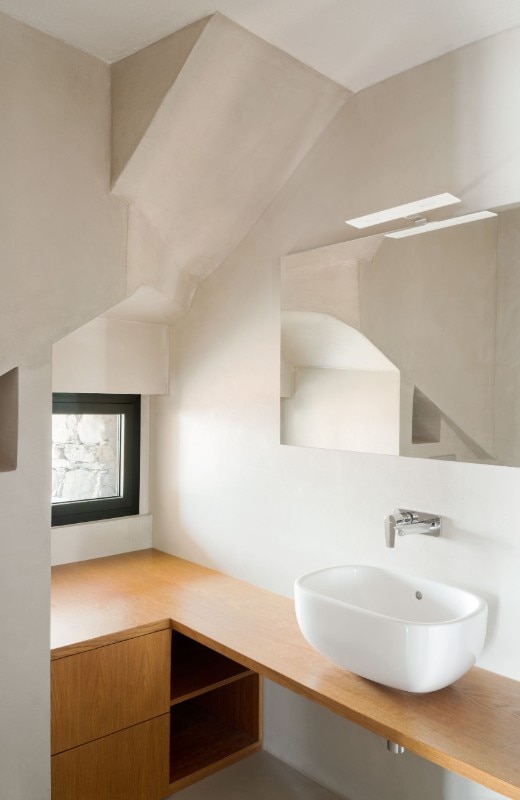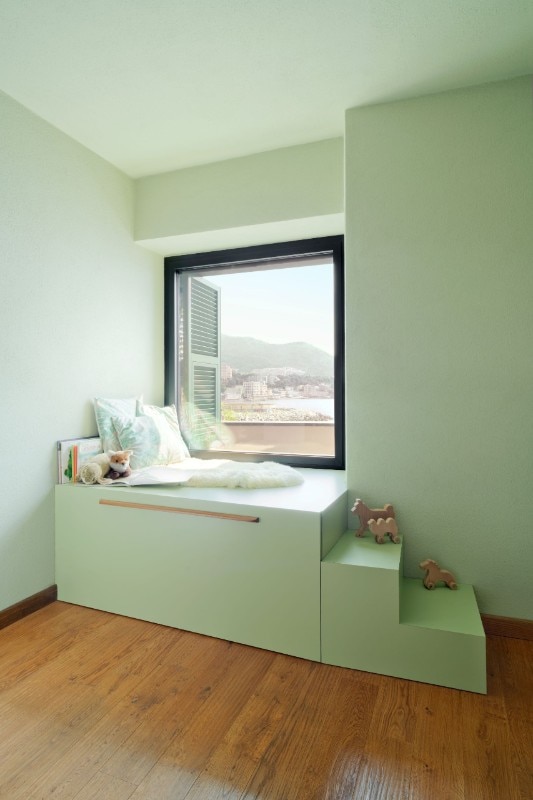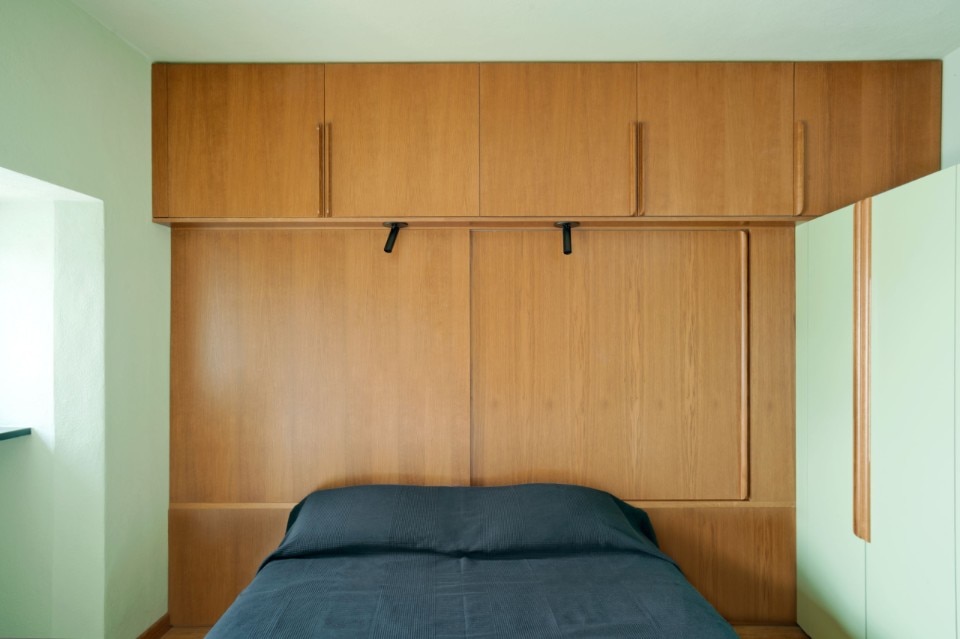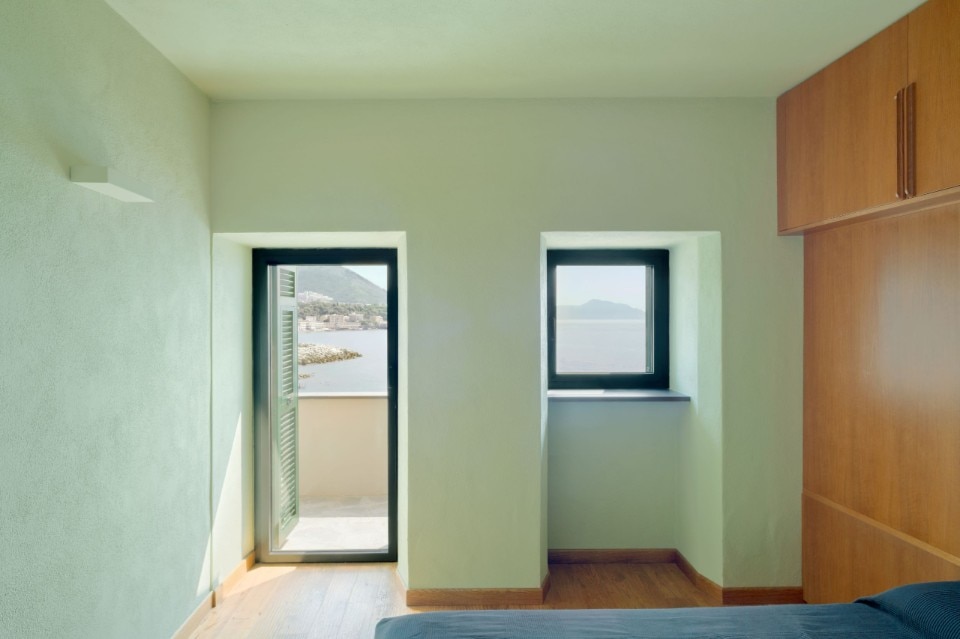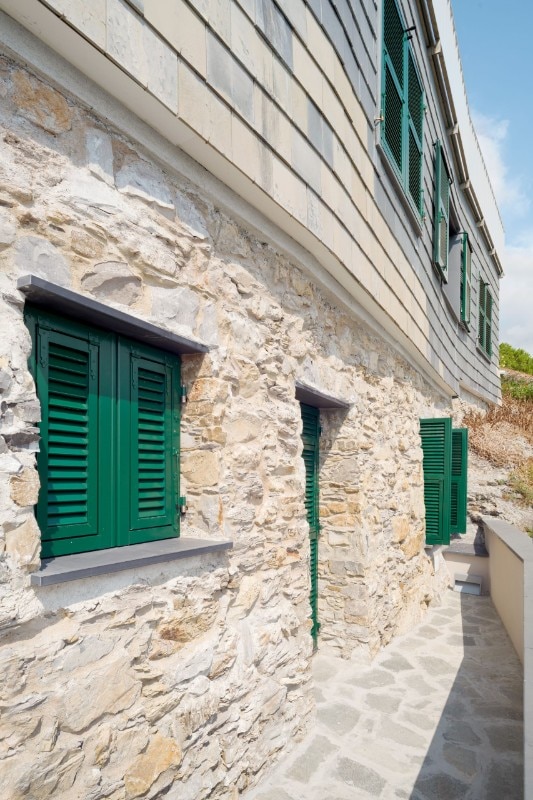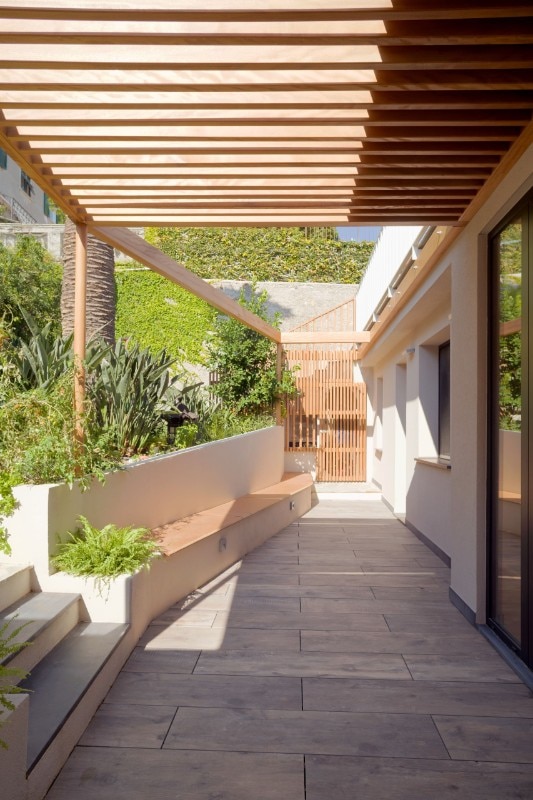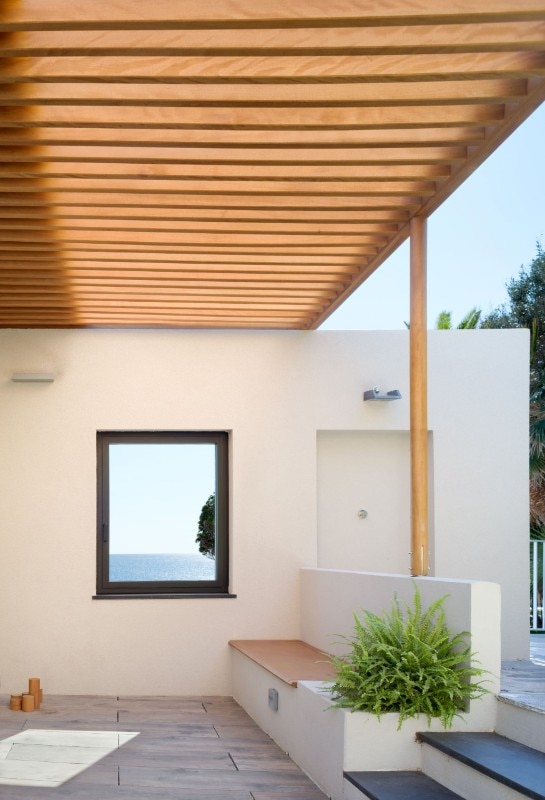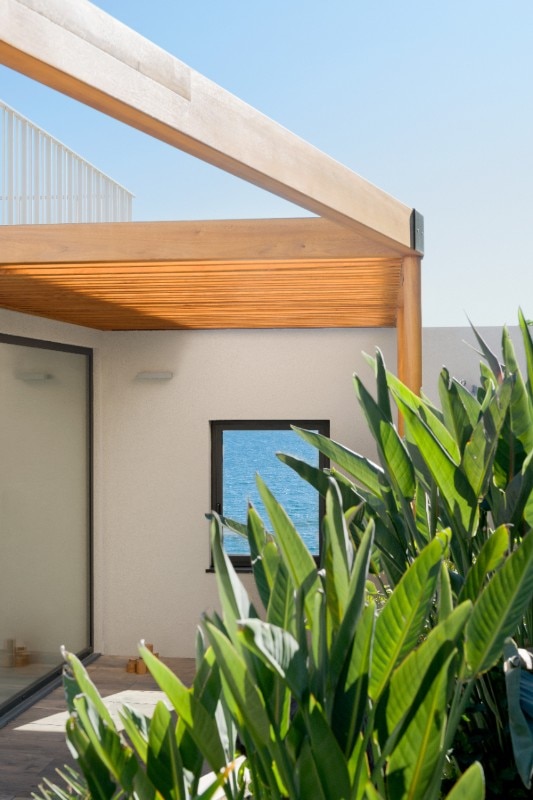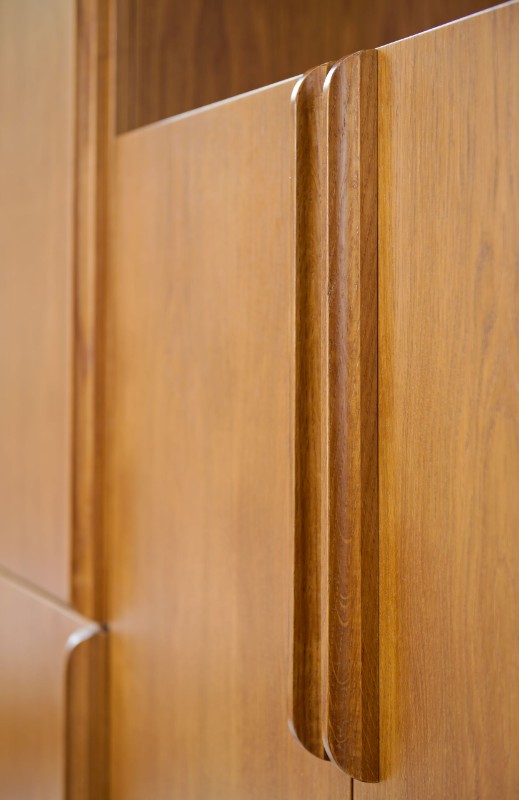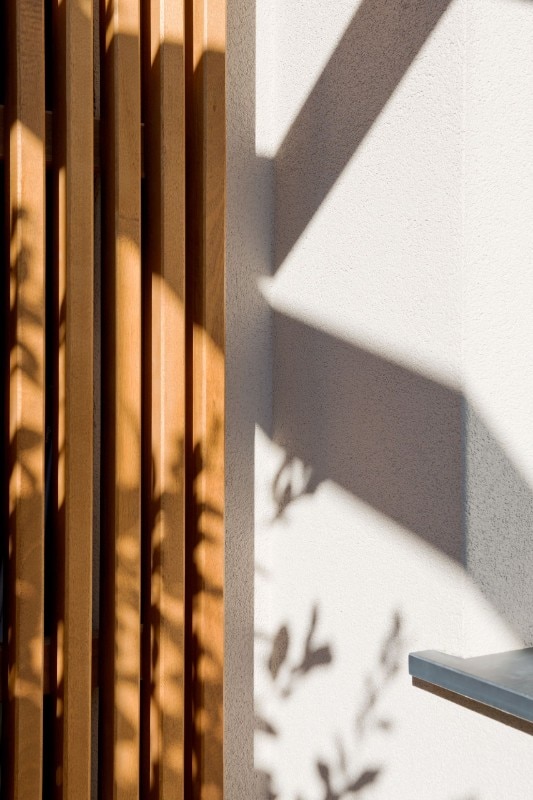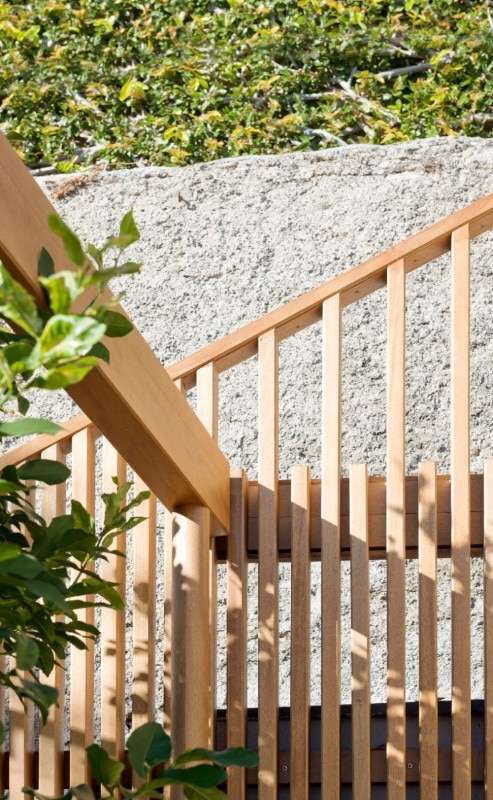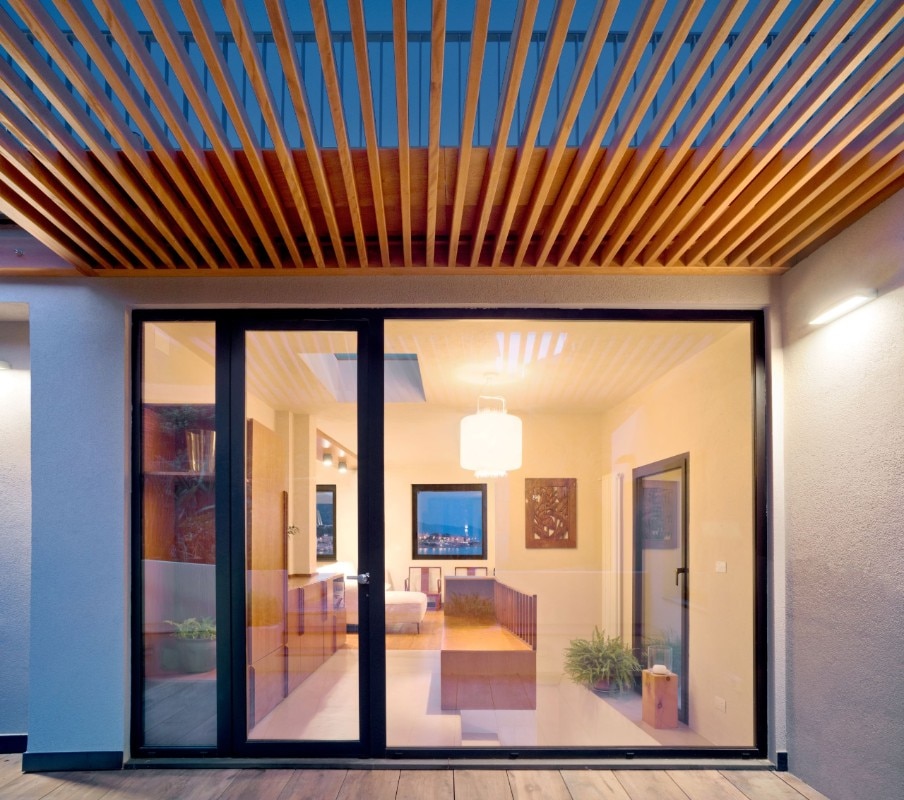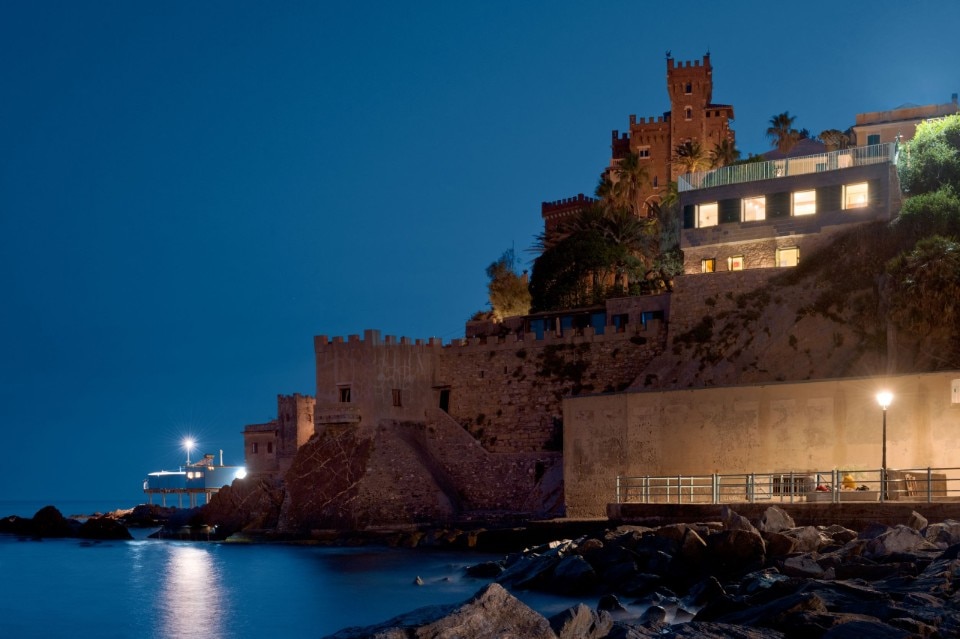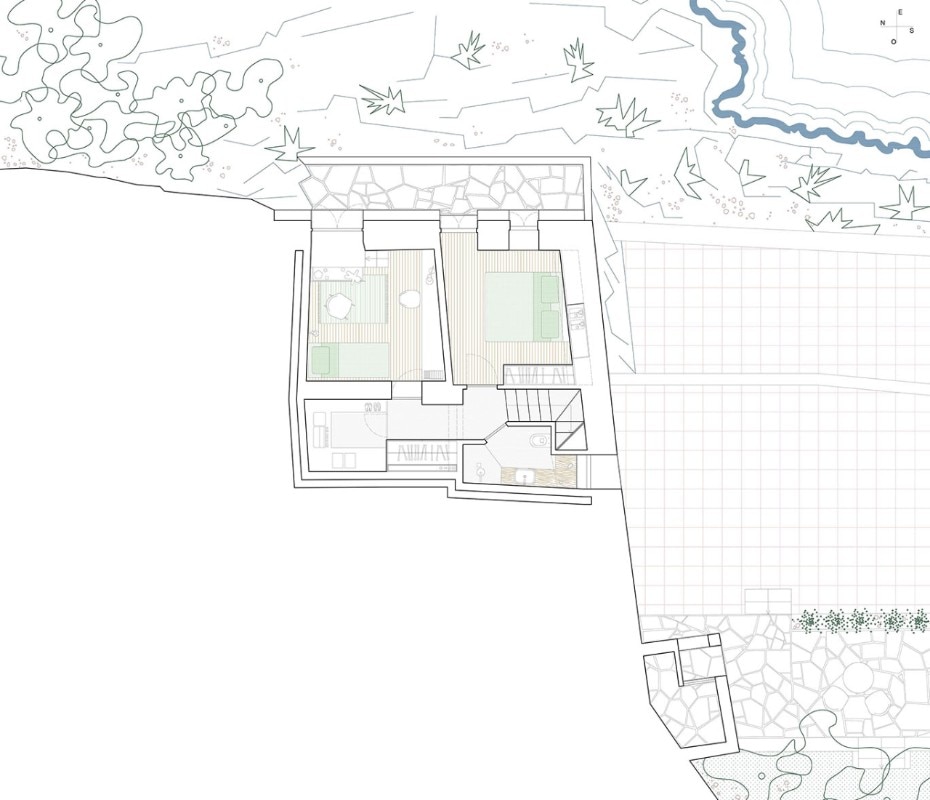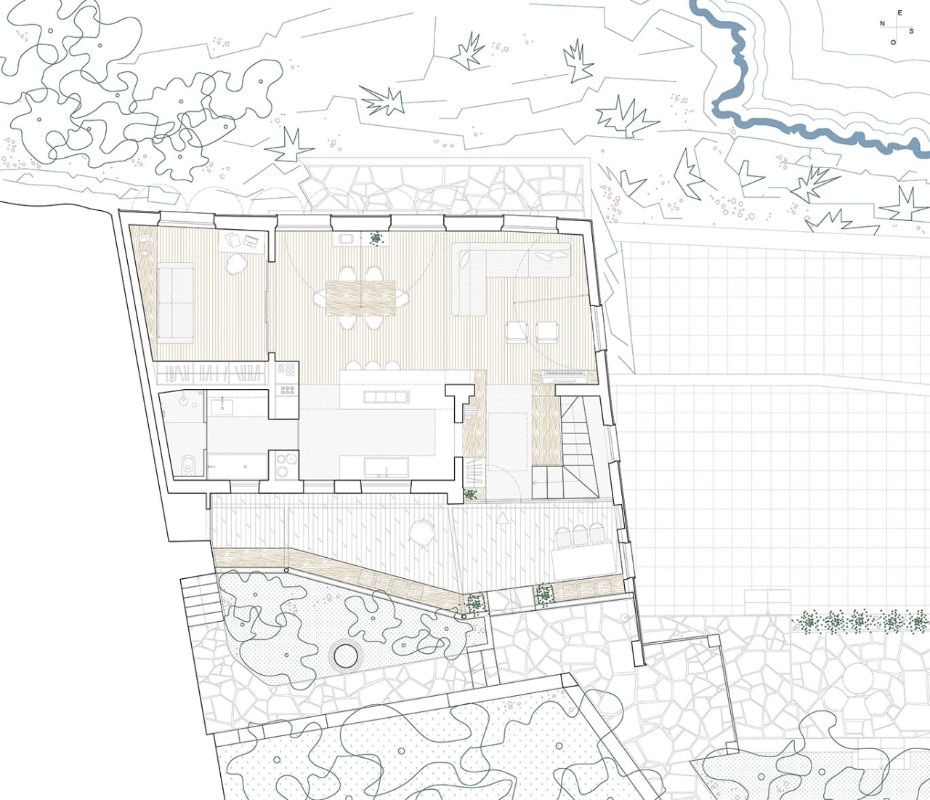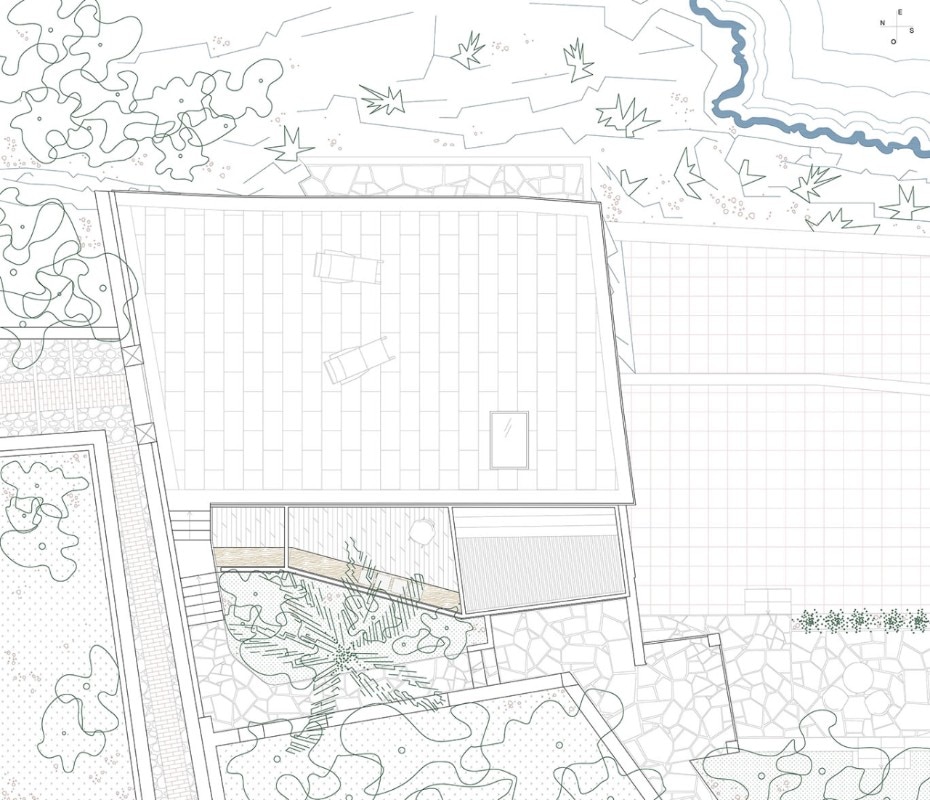At the end of 1958 the Bozzi publishing house in Genoa published a booklet as fascinating as it was useful for understanding the details of that “little experimental house” that the author, Lugi Carlo Daneri, had just built on the cliffs of Sestri Levante for a young newlywed couple. The story is short, but passionate, it talks about the place, the needs of the client and how the occasion of an enchanting location is interpreted through the most complete formal simplicity, making the house so programmatic that it wants to propose itself “as a utilitarian within everyone’s reach”.
The house is a single-storey reinforced concrete structure set on a narrow rectangular area and built on the cliff a few meters above sea level. The long balcony shaded by nautical canvas panels refers to the similar solution present in the Cap Martin villa E-1027, while the Pompeian red colour of the plaster inevitably leads back to the Malaparte house, as if the twentieth century is working through its best architects towards the collective elaboration of a modern type of house on the Mediterranean and that Daneri has the opportunity to contribute with a solution that he himself defines as “experimental”, programmatically different from that of “pretentious and gossipy houses” and “hives in striking contrast with the landscape” which for some time have been growing along the Italian coastal strip.
The need to escape from what Daneri describes as “the nightmare of the city” will be a tumultuously induced phenomenon in the following years, a sign of those profound social and economic transformations that determine the increase in tourism towards the coasts.
How much of that applied research to which Daneri wanted to declare adhesion survives today in the theme of the house “along the shoreline”?
Can the knowledge of the research carried out by twentieth-century architects be key to the implementation of a critical interpretation, therefore of a design starting point?
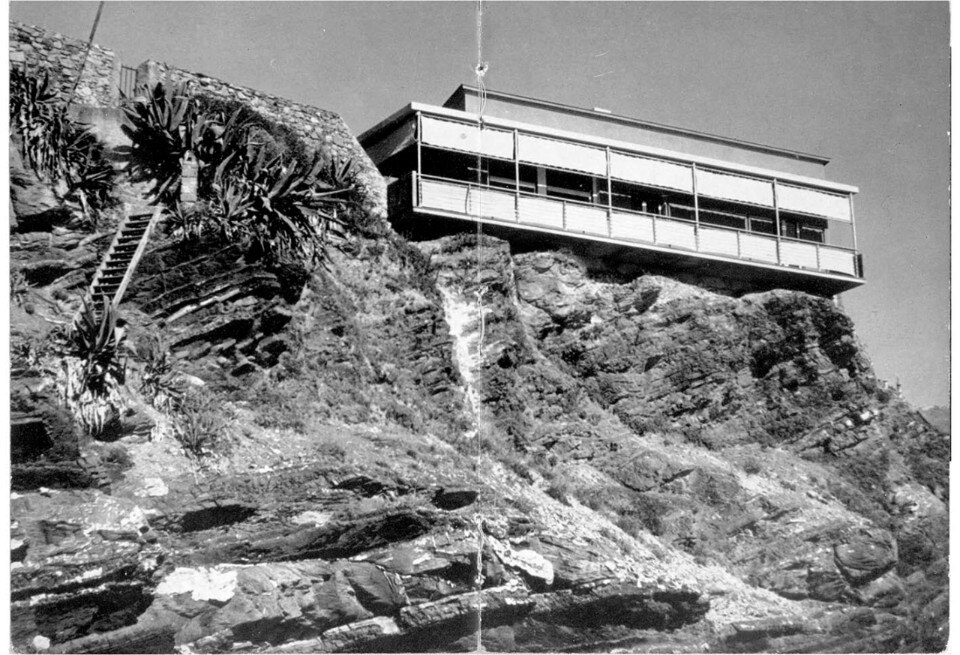
In a recent work by Gosplan – the redesign of a house on the cliff of Capo Santa Chiara, a location between the villages of Boccadasse and Vernazzola, in the eastern part of the Genoese municipal territory – the choice of introversion, the use of a consolidated repertoire, meet with the narrative component of the project, developing in the design phase in the interaction between architects and clients.
It is once again a young couple requesting the work, two scientists passionate about architecture, he Swiss, she Japanese who as a child moved to Singapore, where her father, an engineer, worked on the great projects of Kenzo Tange. Thus, today the house on the Genoese cliffs reminds her, for some analogue combination, of her childhood in Singapore.
The design of a small house is also an opportunity to test an old myth of modernity: to let architecture speak with few and obstinate words, without fear of any loss of meaning, being meaning itself. An exercise of openness and understanding of that submerged world that offers architects the opportunity to compose signs from a collective heritage, and to do so according to linguistic codes aware of the actual impossibility of total silence and complete neutrality. Every slightest sign that the project adds to the cliff crowded with buildings from different eras will declare its request to take heed for a long time. It will be the caesuras, the elementary parts, the essential components of the small building that will speak, to propose the sharing of the meaning of the work. And this also leads back to the ideal of modernity of practicing the impossible with the material of the possible: to clarify an idea of a different and better community through architecture.
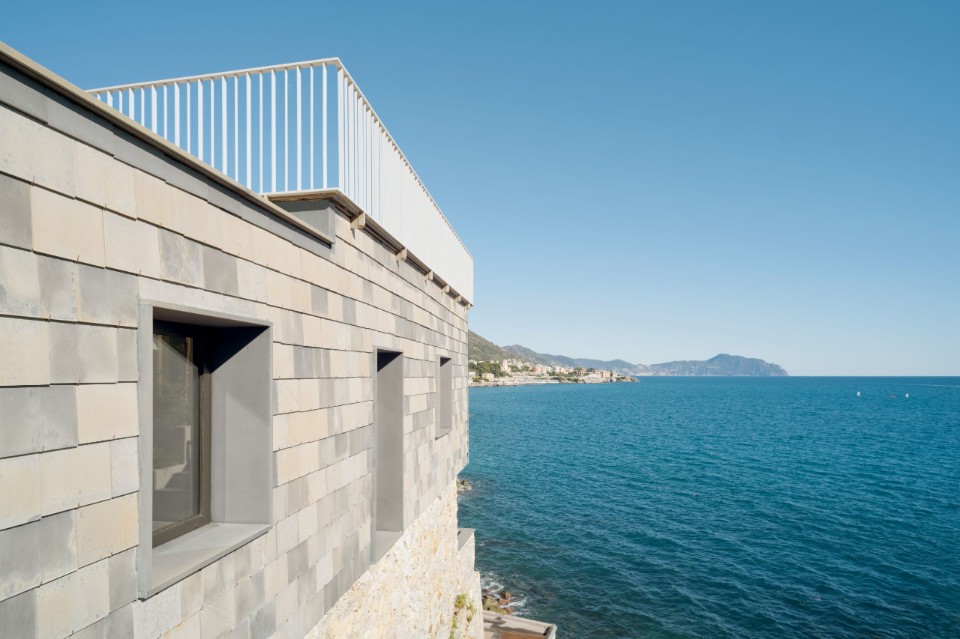
After all, enhanced from the perspective of the landscape, even the most minute project choices are no small thing. The original volume, part of the outbuildings of the towering Türke castle, a gothic revival building that Gino Coppedè completed at the beginning of the twentieth century, relied on a mimetic desire appropriate for a volume of simple service. The most explicit key to interpreting the intervention is found in the alteration of this original desire. The building is a house, and as such fervent of the signs that are at the same time its fundamental constituent parts and symbolic components. Moreover, in the design of the elevations, in their very material definition, an analogical connection is established with the house in Sestri. The facade of red lime plaster, “fresco” pigmented as Daneri defines it, is found in the facade covered with slate slabs which according to Gosplan reproduces historical techniques and, at the same time, echoes the modern interpretations made in Liguria by Marco Zanuso and by Franco Albini.
If Daneri’s experiment of modernity started from an action that is possible thanks to the reproducible component of architecture, that of Gosplan sits on the shoulders of the resistant nature of its individual fundamental constituent elements, identifying in them those architectural components that have maintained throughout history a distinguishable, even when relative, constancy of use, meaning and form.
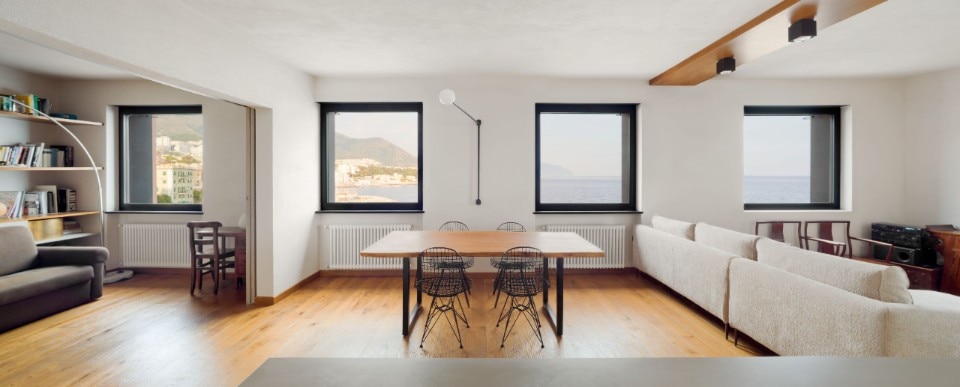
Gosplan’s project acts by altering, with the strategy of the human scale, the relational associations between two objects, the small house and the castle above. In the Capo Santa Chiara house, the fundamental elements are by their nature incompressible and constitute the matter of accomplishment. The four identical square windows on the first floor compose, by opening the leaves of the green shutters, a continuous design that overwrites the facade, magnified by the modest overall size of the volume. And it is a look that tries to see beyond the Modern, towards previous eras.
At this point it seems inevitable to realize how many things there are to heed in a single element, extracted from its pending syntactic composition and put back into play in the project. It is less obvious, however, to question the consequences of this research in following those lines of protection of the landscape heritage that Italian society has laid out over the last eighty years, starting with the first national law on the protection of natural beauty. The field of investigation remains open on what influence the architect-client dialectical confrontation has in leading to the legitimation of needs within a broad and shared cultural perspective.
Perhaps, but it is only a hypothesis, if a dialogue arises from this dialectical comparison, then architect and client may think they are on a good path, since a dialogue is not only what manifests and expresses a desire, but it is that very ability to translate desire into architecture that we try to master.
- Opening image :
- Gosplan, Cliff House, Capo Santa Chiara (GE). Photo Anna Positano


